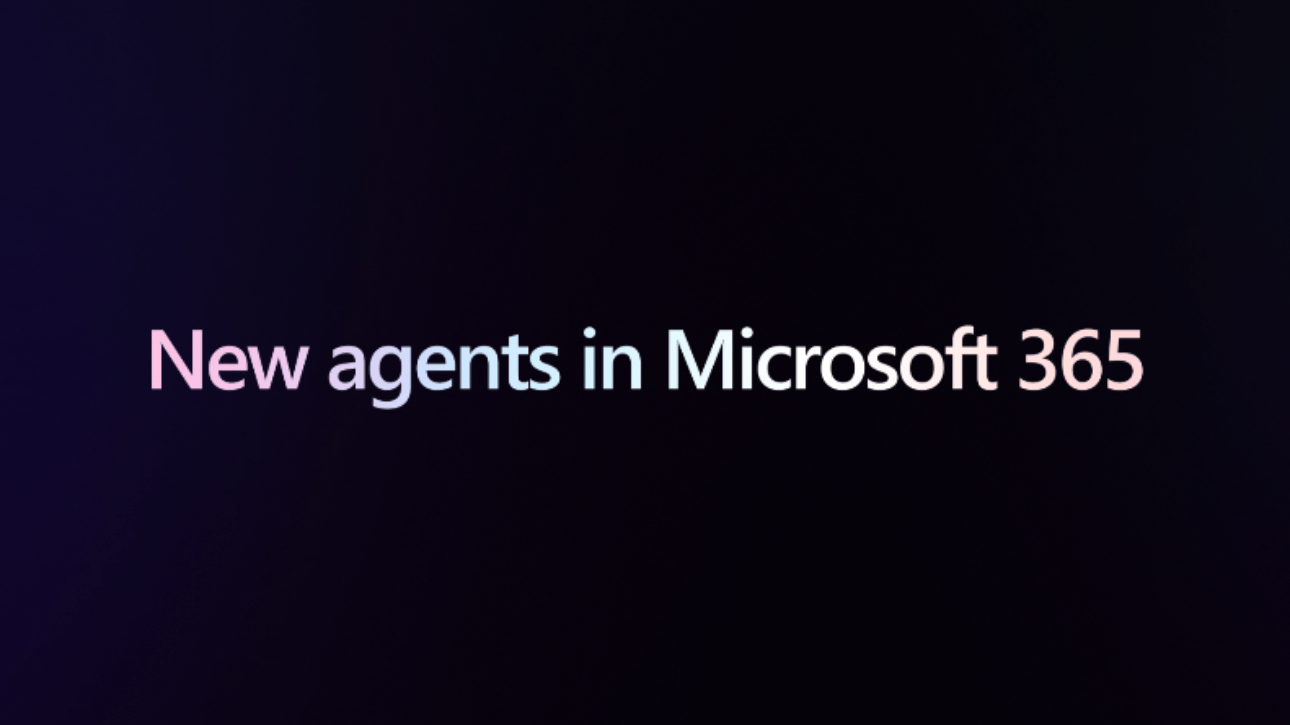- The Logical Box
- Posts
- OpenAI's Potential Browser to Challenge Google's Chrome
OpenAI's Potential Browser to Challenge Google's Chrome
PLUS: Microsoft 365 Introduces Specialized AI Agents

Hello, AI Explorer! Welcome to The Logical Box
OpenAI is reportedly considering developing a web browser integrated with ChatGPT, potentially challenging Google's dominance in the browser market.
Let’s get into it…
Let’s Take a Peek Inside the Box for Today’s Issue:
OpenAI's Potential Browser to Challenge Google's Chrome
OpenAI Deletes Key Evidence in NY Times Lawsuit
Black Forest Labs Unveils FLUX.1 Tools for Advanced Image Editing
Adobe's SlimLM Brings AI to Mobile Devices
Microsoft 365 Introduces Specialized AI Agents
AI Tip of the Week: Take Control of Your Emails with AI
Read time: 5 minutes

Image Source: OpenAI / Google
Think Inside the Box:
OpenAI is reportedly considering developing a web browser integrated with ChatGPT, potentially challenging Google's dominance in the browser market.
Unpacking the Logic:
OpenAI is exploring the creation of a web browser that incorporates ChatGPT, aiming to offer a more AI-driven browsing experience.
The company has hired Ben Goodger and Darin Fisher, key figures in the development of Google Chrome, indicating serious intent in this venture.
Discussions are underway with companies like Conde Nast, Redfin, Eventbrite, and Priceline to integrate AI-powered search features into their platforms.
OpenAI is in talks with Samsung to embed its AI capabilities into Galaxy smartphones, potentially replacing Google's AI services.
Despite these developments, the browser project is in early stages, with no imminent launch planned.
The Logical Impact:
Logically speaking, OpenAI's potential entry into the browser market signifies a strategic move to expand its AI applications and challenge established tech giants. This development prompts businesses to consider: How can integrating advanced AI features into existing platforms enhance user experience and competitiveness?

Image source: Bryce Durbin / TechCrunch
Think Inside the Box:
OpenAI inadvertently erased crucial data pertinent to The New York Times' copyright lawsuit, complicating the legal proceedings.
Unpacking the Logic:
The New York Times and other newspapers are suing OpenAI for allegedly using their articles without permission to train AI models.
Legal teams had spent over 150 hours identifying instances of their content within OpenAI's training data.
OpenAI engineers accidentally deleted this critical data, which was stored on a dedicated virtual machine.
Efforts to recover the data were unsuccessful, as the restored information lacked original file names and structure, rendering it unusable.
OpenAI described the data loss as a "glitch," and The New York Times' attorneys noted they had "no reason to believe" it was intentional.
The Logical Impact:
Logically speaking, this incident underscores the importance of meticulous data management in legal contexts, especially involving AI training datasets. It raises a critical question for businesses: How can robust data handling protocols be established to prevent such costly errors in high-stakes legal situations?

Image source: Black Forest Labs
Think Inside the Box:
Black Forest Labs has introduced FLUX.1 Tools, a suite of models designed to enhance control and flexibility in image editing, building upon their existing FLUX.1 text-to-image model.
Unpacking the Logic:
FLUX.1 Fill: Provides state-of-the-art inpainting and outpainting capabilities, enabling seamless editing and expansion of images based on text descriptions and binary masks.
FLUX.1 Depth: Utilizes depth maps extracted from input images to guide structural modifications, allowing for precise text-guided edits while preserving the original composition.
FLUX.1 Canny: Employs canny edge detection to maintain structural integrity during image transformations, facilitating detailed retexturing and style changes.
FLUX.1 Redux: Functions as an adapter for generating image variations, allowing users to recreate and refine images by blending input visuals with text prompts.
The Logical Impact:
Logically speaking, the introduction of FLUX.1 Tools provides professionals with sophisticated AI-driven image editing capabilities, enhancing creativity and efficiency in visual content creation. This development prompts businesses to consider: How can integrating advanced AI tools like FLUX.1 enhance your organization's visual content strategies and streamline creative workflows?

Image source: VentureBeat made with Midjourney
Think Inside the Box:
Adobe's SlimLM enables advanced document processing directly on smartphones, eliminating the need for cloud computing and enhancing privacy and cost-efficiency for businesses.
Unpacking the Logic:
On-Device Processing: SlimLM allows smartphones to handle complex AI tasks without relying on cloud services, reducing latency and dependency on internet connectivity.
Enhanced Privacy: By processing data locally, SlimLM minimizes the risk of data breaches associated with cloud storage, offering a more secure solution for sensitive information.
Cost Reduction: Eliminating the need for cloud infrastructure can lead to significant cost savings for businesses, particularly in data storage and processing expenses.
Open-Source Release: Adobe plans to publicly release SlimLM's code and training dataset, empowering developers to create privacy-preserving AI applications for mobile devices.
Future of AI: As smartphone processors advance, the balance between cloud-based and on-device AI processing is expected to shift towards local computing, marking a new paradigm in AI's evolution.
The Logical Impact:
Logically speaking, SlimLM's on-device AI capabilities offer businesses a secure and cost-effective alternative to cloud-based solutions. This development prompts organizations to consider: How can integrating on-device AI enhance your operational efficiency and data privacy strategies?

Image source: Microsoft
Think Inside the Box:
Microsoft has unveiled new AI agents within Microsoft 365, enhancing Copilot's capabilities to automate tasks and provide specialized expertise, thereby boosting user productivity.
Unpacking the Logic:
Enhanced Copilot Functionality: The new agents augment Copilot by adding specialized skills and automating specific tasks, enabling users to focus on more strategic activities.
SharePoint Integration: Employees can now create and utilize agents grounded in SharePoint data, facilitating real-time information retrieval and insights without extensive searching.
Facilitator Agent in Teams: This agent assists in meetings by taking real-time notes, allowing participants to engage more deeply without the distraction of manual note-taking.
Customization via Copilot Studio: Users can tailor agents to specific projects or tasks, automating workflows and leveraging additional data sources beyond SharePoint.
Seamless Collaboration: Agents can be easily shared across platforms like email or Teams, promoting efficient collaboration and information sharing within organizations.
The Logical Impact:
Logically speaking, the introduction of these AI agents signifies a strategic advancement in automating business processes and enhancing collaboration. This development prompts businesses to consider: How can integrating AI agents into your operations streamline workflows and improve team productivity?
AI TIP OF THE WEEK
AI TIP OF THE WEEK
Take Control of Your Emails with AI
Tired of your inbox being a mess?
AI tools can help you organize emails, keep track of important ones, and even write replies for you.
How AI Can Help You:
It organizes your emails, so you see the important ones first.
It gives quick summaries of long email threads.
It writes drafts for your replies, saving you time.
Easy Steps to Get Started:
Pick a Tool: Try something like SaneBox (to organize emails), Superhuman (to speed up emails), or ChatGPT (to help write replies).
Organize Your Inbox: Let the tool sort emails into "important" and "less important" folders.
Summarize Long Emails: Use AI to give you a quick summary instead of reading everything.
Write Replies Faster: The AI can suggest responses, so you don’t have to start from scratch.
Save Time on Repeated Tasks: Use templates or scheduled emails for things you send often.
Why It’s Useful:
If you’re busy and get a lot of emails, these tools can help you:
Spend less time reading and replying.
Never miss an important email.
Focus on what really matters.
Tools to Try:
SaneBox: Helps sort your inbox automatically.
Superhuman: Makes email fast and simple.
ChatGPT: Writes replies or summaries for you.
With AI, handling emails becomes easy, so you have more time for the things you care about!
Please share The Logical Box link if you know anyone else who would enjoy!